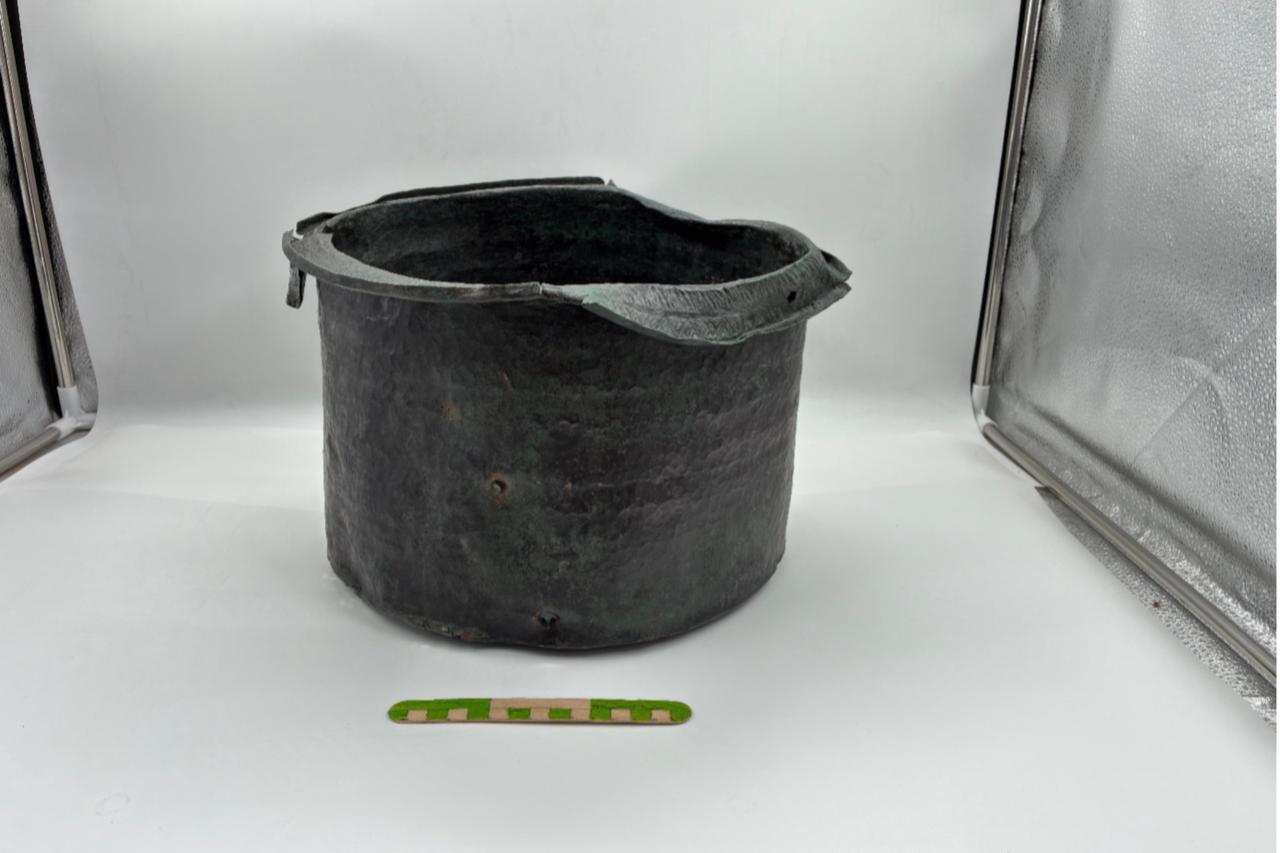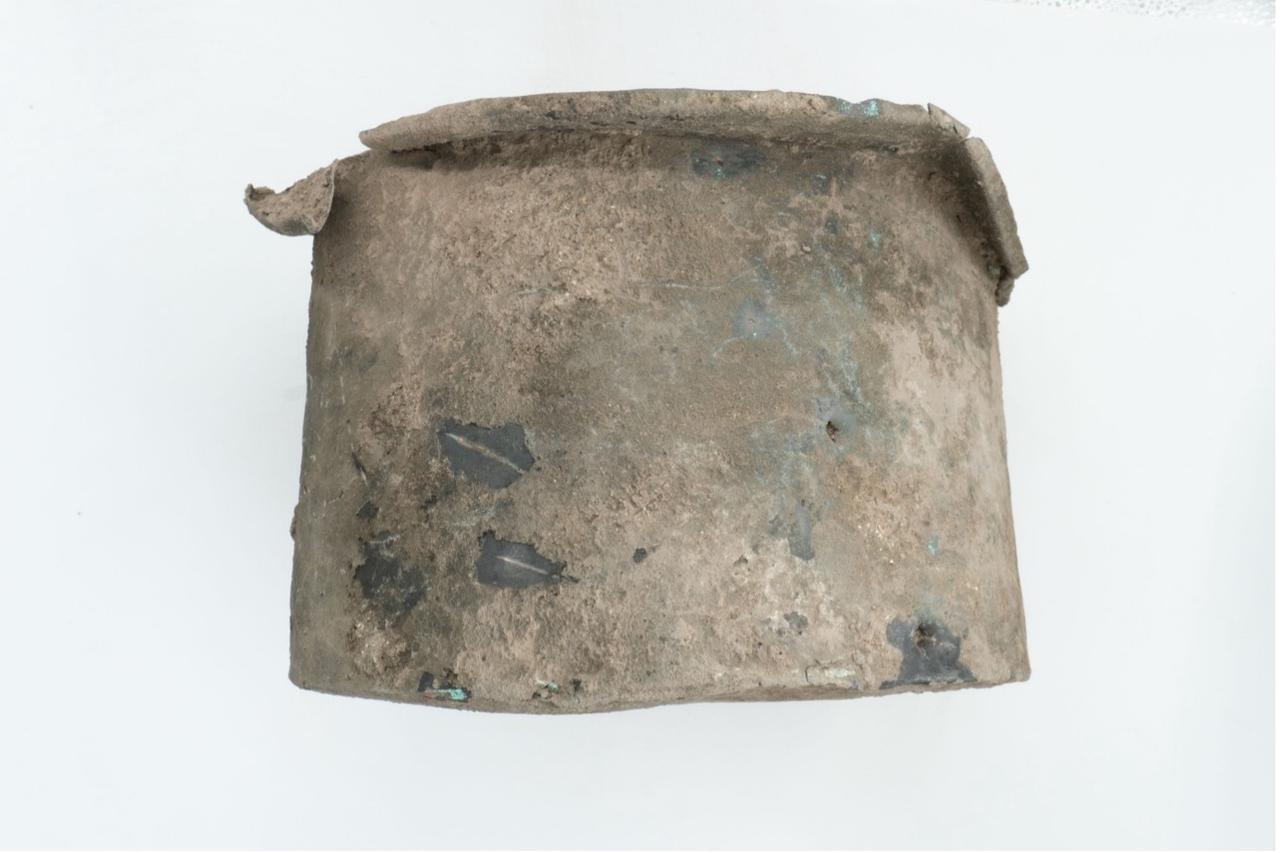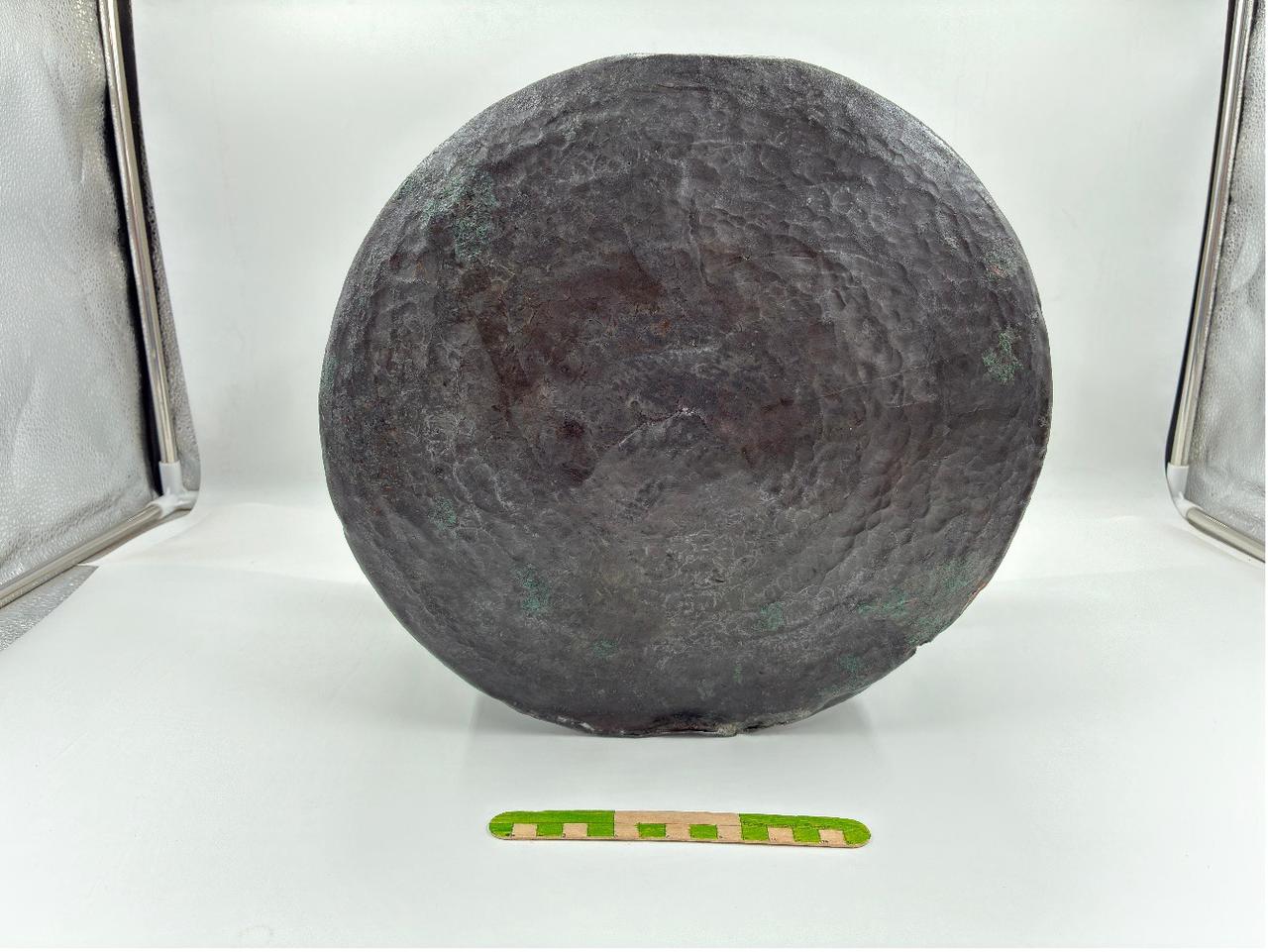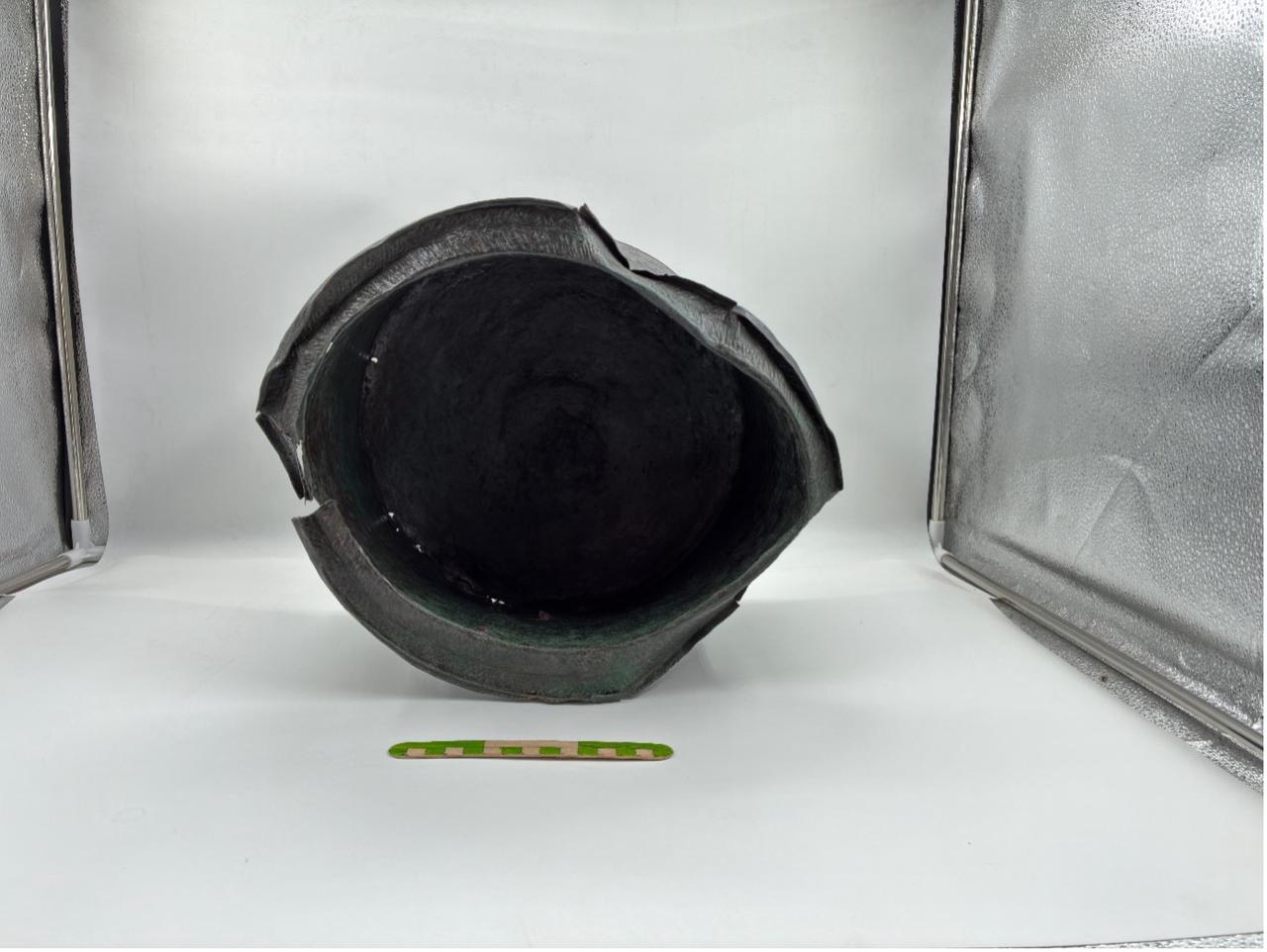
A remarkably well-preserved bronze cauldron, believed to date back approximately 1,400 years to the Roman period, has been uncovered in the ancient city of Pergamon, located in the Bergama district of Izmir, western Türkiye.
The discovery came during ongoing archaeological excavations carried out near the Red Basilica (Kizil Avlu), one of the city's most significant ancient landmarks.
The find was announced by the Pergamon Excavation Directorate, which operates under the “Heritage for the Future” archaeological project. The excavations are currently led by Professor Yusuf Sezgin.

The bronze vessel was found in a pool area within a structure archaeologists refer to as the "House with Mosaics." The structure is situated close to the Red Basilica, a massive temple complex that dates to the Roman Imperial period.
Despite the centuries that have passed, the cauldron was discovered in a complete state. Experts have confirmed that the object, which has a height of 23 centimeters, a width of 28 centimeters (8.26 inches), and a depth of 21 centimeters, was forged using the hammering technique—a method common in Roman metalwork.

Conservation and restoration efforts have revealed that the bronze cauldron is in excellent condition.
After cleaning, the surface showed visible hammer marks, indicating the craftsmanship used in its manufacture.
The upper section of the vessel features linear decorative motifs.
Based on its stylistic and technical attributes, archaeologists have dated the object to the Roman period, suggesting it has remained buried for nearly a millennium and a half.

Following the completion of restoration and cleaning procedures, the cauldron is expected to be added to the collection of the Bergama Museum, where it will be publicly displayed.
The Pergamon excavation team continues its work within the broader framework of preserving and studying one of Türkiye’s most historically rich ancient cities.